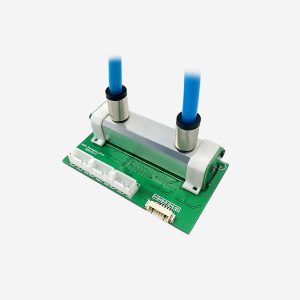-
What is a gas detector?
- Gas detectors are essential safety devices used to detect and monitor the presence of hazardous gases in various environments. These devices play a crucial role in industries such as oil and gas, mining, chemical manufacturing, and firefi……
- Chat Online
-
Description
Gas detectors are essential safety devices used to detect and monitor the presence of hazardous gases in various environments. These devices play a crucial role in industries such as oil and gas, mining, chemical manufacturing, and firefighting. Gas detectors help protect workers' health and safety by providing early warnings of potentially dangerous gas leaks or excessive gas concentrations. This article aims to explain what a gas detector is, how it works, and its importance in ensuring a safe working environment.

Definition and Types of Gas Detectors:
A gas detector is a portable or fixed device that detects the presence of specific gases in the air. There are various types of gas detectors available, each designed to detect different gases or gas groups. Common types include combustible gas detectors, toxic gas detectors, oxygen deficiency monitors, and multi-gas detectors capable of detecting multiple gases simultaneously.
Working Principle of Gas Detectors:
a. Combustible Gas Detectors: These devices use catalytic combustion sensors or infrared sensors to detect flammable gases. Catalytic sensors contain a heated element that reacts with combustible gases, causing a change in resistance or temperature. Infrared sensors, on the other hand, detect gases by measuring the absorption of infrared radiation caused by the target gas.
b. Toxic Gas Detectors:
Toxic gas detectors employ various sensor technologies such as electrochemical sensors, metal oxide semiconductor (MOS) sensors, or photoionization detectors (PID). Electrochemical sensors produce a current proportional to the concentration of the target gas, while MOS sensors detect changes in conductivity. PID sensors use ultraviolet light to ionize molecules, enabling the detection of volatile organic compounds (VOCs) and other toxic gases.
c. Oxygen Deficiency Monitors:
These devices measure the oxygen concentration in the air and provide warnings when the levels fall below a safe threshold. Oxygen deficiency monitors typically use paramagnetic sensors or zirconium oxide sensors to detect changes in oxygen concentration.
d. Multi-Gas Detectors:
Multi-gas detectors combine different sensor technologies to detect and monitor multiple gases simultaneously. These devices often include sensors for combustible gases, oxygen, carbon monoxide, and various toxic gases.
Importance of Gas Detectors:
Gas detectors are crucial for maintaining a safe working environment, protecting workers' health, and preventing accidents. They provide early warning signs of gas leaks or dangerous gas concentrations, allowing workers to evacuate the area, initiate emergency procedures, or take appropriate safety measures. Gas detectors also help prevent explosions, fires, and the spread of toxic gases by triggering alarms and facilitating rapid response.
Factors to Consider when Selecting Gas Detectors:
When choosing a gas detector, several factors should be considered: a. Type of Gas: Identify the specific gas or gases that need to be detected in the intended environment. b. Detection Range: Ensure that the gas detector can measure concentrations within the required range
Proper Use and Maintenance:
To ensure accurate and reliable performance, gas detectors require proper use, regular maintenance, and calibration. Follow the manufacturer's guidelines for installation, operation, and maintenance. Conduct routine functional tests, calibrate sensors as recommended, and replace any faulty or expired components promptly.

Conclusion:
Gas detectors are vital safety devices used to detect and monitor hazardous gases in various environments. By providing early warnings of gas leaks or excessive gas concentrations, gas detectors help protect workers' health and safety, prevent accidents, and enable timely response. Understanding the different types of gas detectors, their working principles, and the factors to consider when selecting and maintaining them is essential in creating a safe working environment in industries where gas hazards are present.
-
Recommend:
-
-
Gas detectors are essential devices used to detect and moni…
-
Gas sensors are electronic devices that detect, measure, an…
-
Gas detectors are essential safety tools that detect the pr…
-
Where is the gas detector mainly used
Gas detectors are essential safety tools that detect and mo…
-
 : +86 155 8830 2704
: +86 155 8830 2704 : jxdziot@gmail.com
: jxdziot@gmail.com
